Nordic Disability Rights
Following the social and economic transformations after World War II and the ambitious promises of the Nordic welfare model, Nordic disability rights activism grew. It reached its peak in the 1970s and early 1980s, influenced by the United Nations International Year of Disabled Persons (IYDP) in 1981 as well as the leadership of key figures, like Bengt Olof Lennart Lindqvist and Niels Erik Bank-Mikkelsen. As well as making strides at home, Nordic disability organizations became forerunners in promoting disability rights within north-south cooperation and the development sphere. Today, the Nordic disability movement is somewhat fragmented, but maintains an important role in policy-making and monitoring the implementation of disability rights.
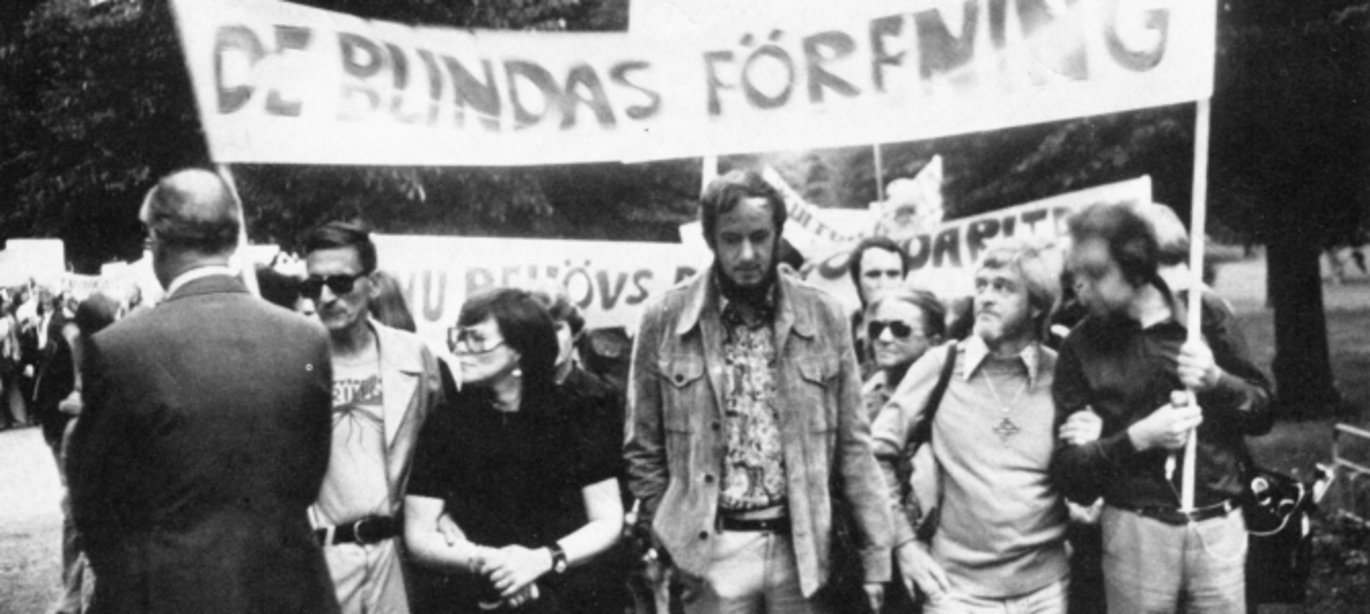
You can find out more about the historic development of Nordic disability rights movement by clicking on the links to articles and biographies below.
Disability policies and movements in the Nordic countries since 1945
Nordic disability rights activism, consisting of parent associations, self-advocacy organizations, public and political supporters, reached its peak in the 1970s and early 1980s. Protests and awareness campaigns led to a new social- and rights-based understanding of disability as well as important legal reforms.
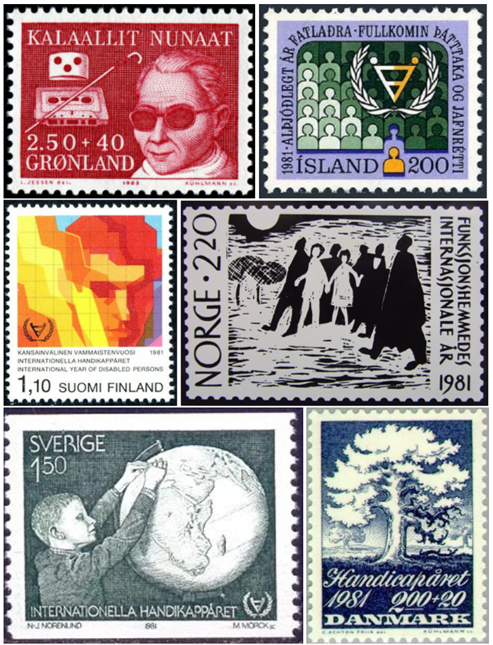
PICTURE: Visual interpretations of disability on stamps issued by the Nordic governments for the International Year of Disabled Persons in 1981. Collage: Anna Derksen.
Transnational interactions of Nordic disability activism, 1980-2000
In 1981, the United Nations International Year of Disabled Persons (IYDP) shed new light on the global situation of people with disabilities with the slogan ‘full participation and equality’. The IYDP prepared the ground for an increasing engagement of Nordic experts and activists in global disability issues.
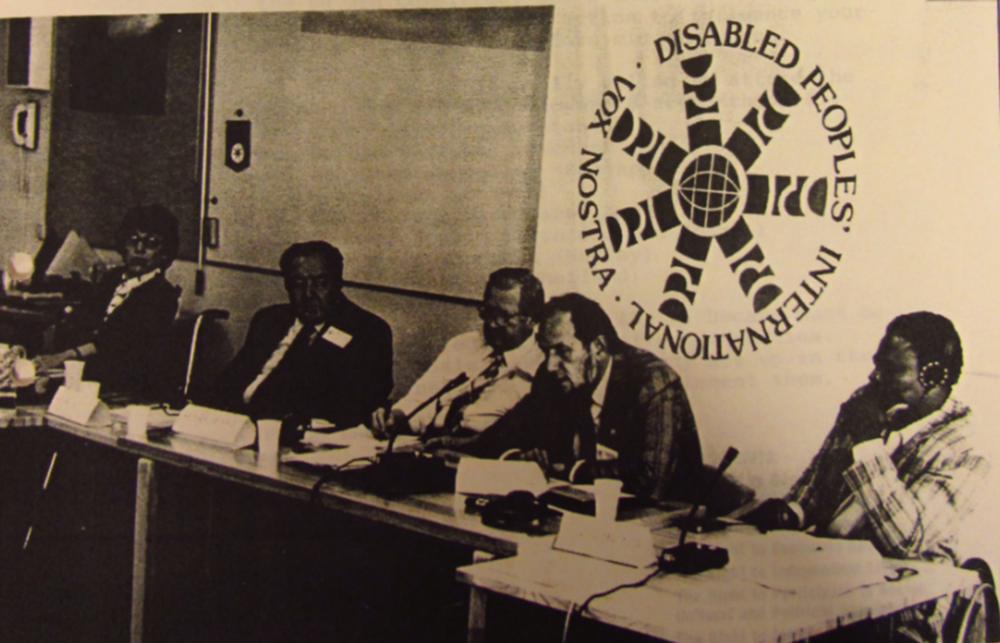
PICTURE: Disabled People’s International (DPI), founded in 1981 as the first transnational organization run by persons with disabilities, held a world council meeting and symposium in Stockholm in 1987 that was organized by Bengt Lindqvist. Photo: DPI-Calling – European Regional Newsletter, 3, 1987, p. 9. Reused with kind permission of DPI.
Disability, development and the Nordics, 1960s-2000
Nordic disability organizations have been carrying out development projects in the Global South since the 1960s. In 1980s, the initial approach of prevention and rehabilitation became increasingly seen as paternalistic and the focus turned to organization-building and grassroots initiatives. The Nordic countries became frontrunners in promoting disability as an important global rights issue, and in 1990s it became a central topic in Nordic development policy, which has been built on since.
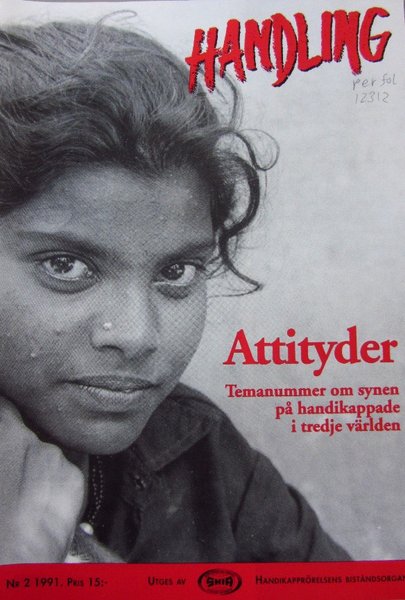
PICTURE: A magazine cover from the Swedish disability rights movement’s umbrella organisation for international development work in 1991. Photo: Reproduced with kind permission from My Right.
Kalle Könkkölä (1950-2018)
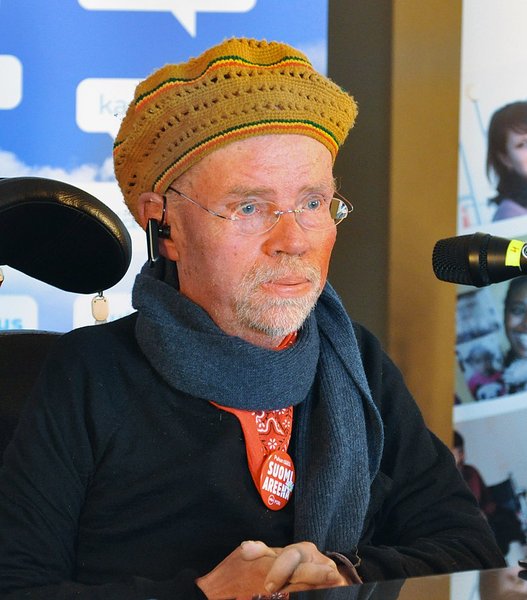
Kalle Kustaa Topias Könkkölä was an environmental activist, politician and key figure of the Finnish disability rights movement. Physically disabled since birth, Könkkölä attracted nationwide attention when he was elected to the Finnish parliament for the environmental movement in 1983, which also made him the first MP with a disability. Today, Könkkölä is mostly known for his longstanding commitment to the promotion of disability rights, including his role in initiating the first Finnish disability organization with a human rights approach, the Threshold Association, in 1972, as well as supporting people with disabilities in developing countries and humanitarian contexts.
Bengt Olof Lennart Lindqvist (1936-2016)
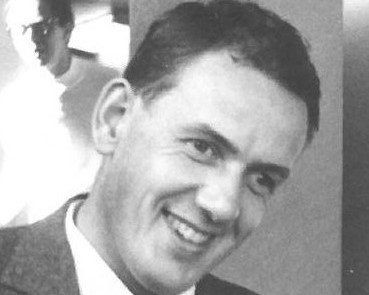
Bengt Lindqvist was a Swedish politician and an active member of Swedish and international disability organizations. He became deputy minister for social security in 1985, the first Swedish minister with a visual impairment, and served as the first United Nations Special Rapporteur on Disability from 1994 to 2002. In both the national and the international arena, he was committed to promoting the recognition of disabled people’s equal rights, as well as strengthening exchange and cooperation between disability representatives, the state and the public.
Niels Erik Bank-Mikkelsen (1919-1990)
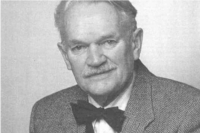
Niels Erik Bank-Mikkelsen was a Danish policy reformer and advocate for the rights of persons with intellectual disabilities. Working for the Danish Service for the Mentally Retarded, he developed the Mental Retardation Act of 1959 that granted the intellectually disabled a right to the same living conditions as other citizens. At a time when marginalization and segregation in special institutions were the norm, this was seen as a radical move and his ideas quickly gained ground both in Denmark and internationally.
Further reading:
- Diane Driedger, The Last Civil Rights Movement: Disabled Peoples' International (London and New York: Hurst and Co. / St. Martin's Press, 1989).
- Rannveig Traustadóttir and Kristjana Kristiansen, eds., Gender and Disability Research in the Nordic Countries (Lund: Studentlitteratur, 2004).
- Snæfriíður Thóra Egilson, Berit Berg and Rannveig Traustadóttir, eds., Childhood and Disability in the Nordic Countries. Being, Becoming, Belonging (Basingstoke: Palgrave Macmillan, 2015).